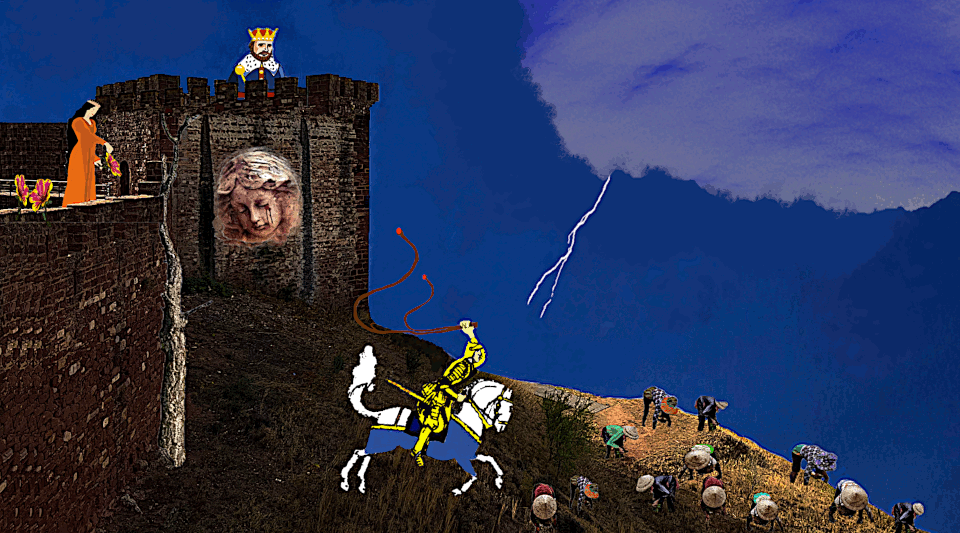
My collage for the 141st round of the LMAC Collage Contest (I don't compete in the contest) was inspired by @shaka's template photo and by my acute interest in history.
@shaka's Template Photo
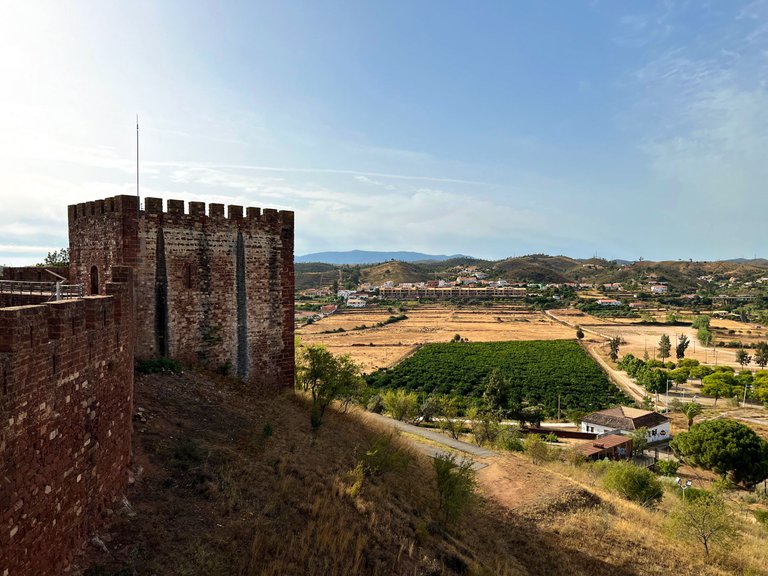
When I see a picture with a medieval structure, I don't think romance. I think of a feudal social order. Short life spans. Lives spent in bound servitude. So, my collage reflects what came to mind.
There were several versions of the collage, but always at the heart was the same dynamic of oppressed labor and privileged rulers. And so my little narrative in this blog will look at the issue of labor and leisure. I try to take the long view.
Who works? Who benefits from that labor? Is it the natural order that some will have leisure, and others will labor to secure that leisure?
There is no doubt that work needs to get done in order for society to have food and goods. Who does that work, and who reaps the benefit?
Ancient Greek Statue, Farmer and 2 Oxen
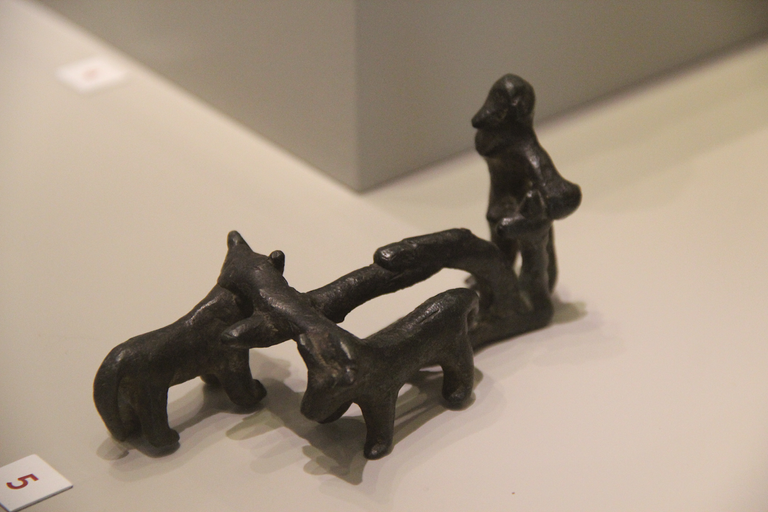
Credit:Gary Todd from Xinzheng, China. Public domain. 6th Century B.C.
I looked up attitudes of the Ancient Greeks about work, and work equity. Not much help there, if I'm looking for a theory of equity. The sociologist Robert B. Hill describes the classic Greek attitude toward work and leisure: "...philosophers such as Plato and Aristotle made it clear that the purpose for which the majority of men labored was "in order that the minority, the élite, might engage in pure exercises of the mind--art, philosophy, and politics".
Indeed it seems these philosophers regarded as brutish those people who toiled to keep them in leisure. "Hard work, whether due to economic need or under the orders of a master, was disdained."
After reading about the Ancient Greeks, I made a discouraging excursion into Thorstein Veblen. This high priest of social and economic theory offers us this assessment: "...in feudal Europe or feudal Japan...the distinction between classes is very rigorously observed; and the feature of most striking economic significance in these class differences is the distinction maintained between the employments proper to the several classes."
Reeve and Serfs in Feudal Europe

Credit: Anonymous. 1310. Public domain
Veblen informs us that in early Icelandic communities, in the Age of Sagas, "Manual labour, industry, whatever has to do directly with the everyday work of getting a livelihood, is the exclusive occupation of the inferior class."
It seems, if there are people who do nothing, then there must necessarily be people who do a great deal.
Is there a remedy, another way to order society? Utopians had/have ideas about this. In the U.S several societies arose that were inspired by Utopian principles. All were supposed to share work and leisure equally. One of these communities, Brook Farm, had some famous residents,which included Ralph Waldo Emerson. Founded in the 1840s, the community failed by the end of that decade because it was not economically viable.
Of course, so far I've ignored the elephant in the room: Marxism.
Gold Plated Phone in the Museum of Revolution, Havana, Cuba

Credit: lukaszKatlewa. Used under CC 3.0 license. This telephone sits as a symbol of the elite class against which Fidel Castro and his followers fought in the Cuban Revolution. Castro represented himself as a Marxist-Leninist. The phone had been given to the ousted leader of Cuba, Fulgencio Batista by the International Telephone and Telegraph Company before the revolution.
Marxism, of course, is the economic/social/political system, proposed by Karl Marx and Friedrich Engels which was supposed to address the inequitable dynamic between labor and the elite.
We all know what happened. The world split in two, and then it split into sub factions.
Cold War: JFK (USA) and Krushchev (USSR) in Front of Their Respective National Flags
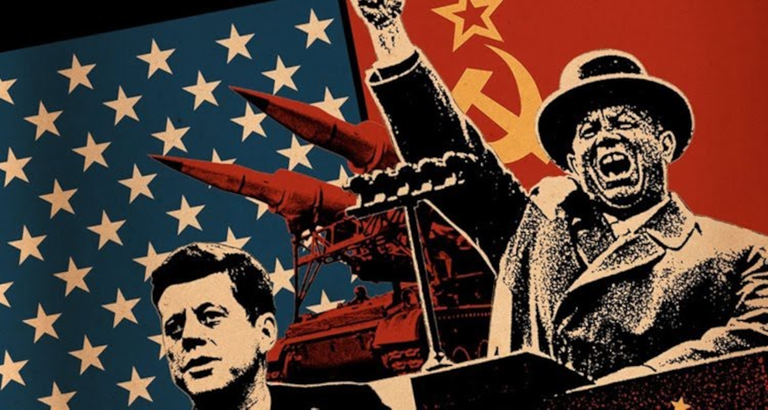
Credit: Ruby Jennings. Used under CC 4.0 license.
There was capitalism, Marxism, socialism, fascism. The legacy of these 20th century isms are with us today. And yet, in every country, no matter the dominant ism, one is likely to find an elite class, and a laboring class.
Is this the natural order?
I knew what I wanted to do, right away. As I closed in on my target, I couldn't make up my mind about the final effect. Here are three slightly different versions of the collage (there were more!)
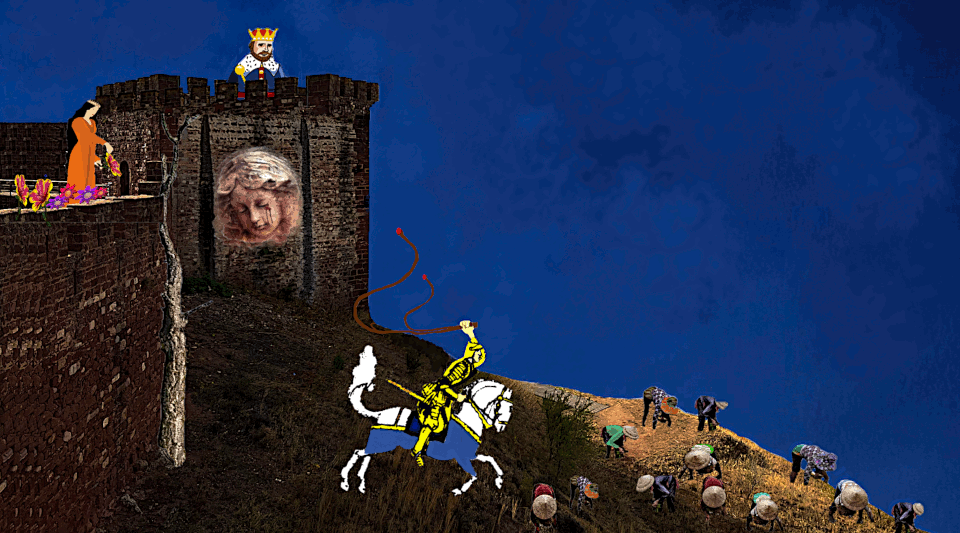
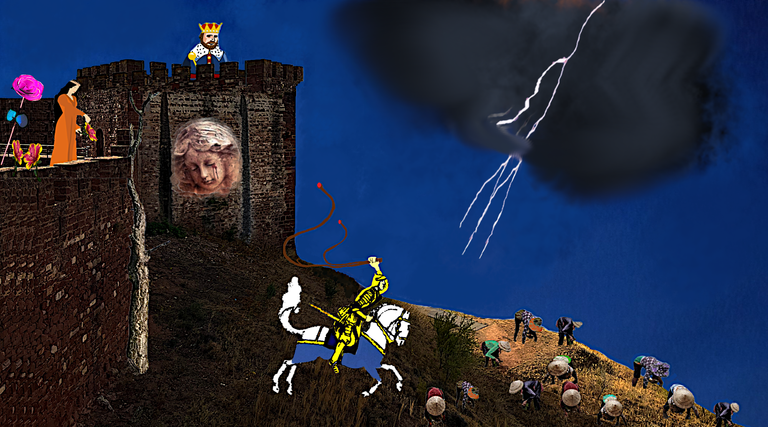
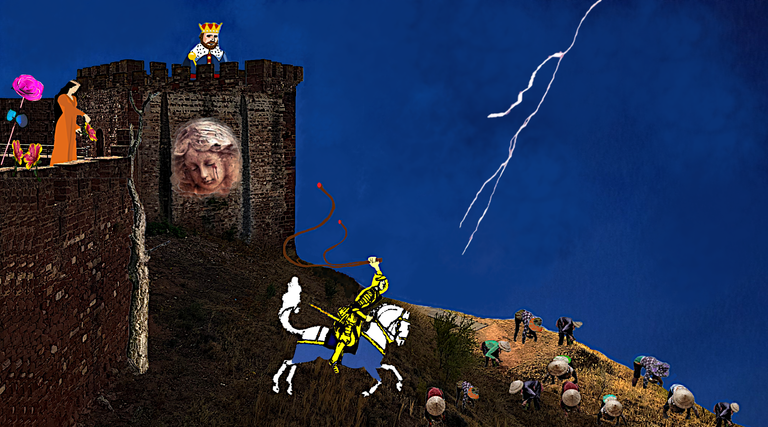
I have many people to thank for the contributions they made to this effort:
I started with the great @muelli's tree trunk (next to the castle), which I borrowed from LMAC's Image Gallery, LIL.
I borrowed the flower in the queen's hand, from @edgarafernandezp. Again from LIL.
The sky I borrowed from @lunaturqueza, on LIL.
The wonderful storm cloud I borrowed from @justclickindiva, again on LIL.
The large pinkish flower in one of the collages is my own contribution to LIL.
Anyone on Hive may contribute to LIL and anyone may borrow from LIL. All images are in the public domain. Rules may be found here.
I borrowed many images from Pixabay:
My process began with taking out the background and focusing on the castle and land immediately in front of it.
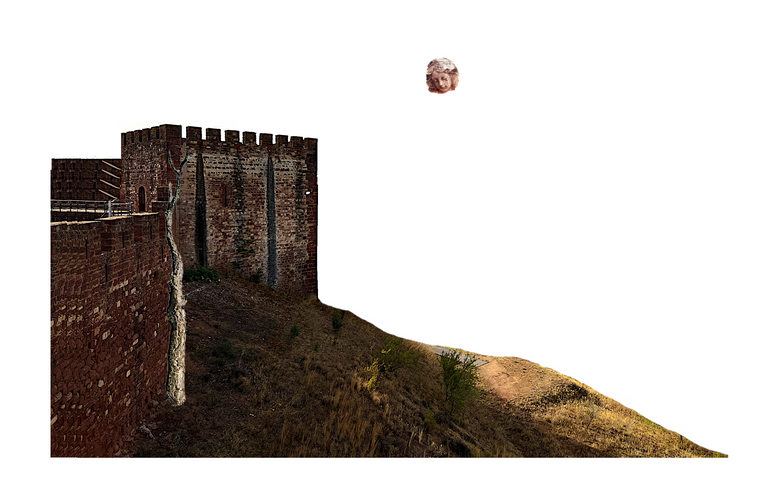 My process is very primitive. I just keep adding pieces until I find the outcome satisfactory.
My process is very primitive. I just keep adding pieces until I find the outcome satisfactory.
I use Paint 3d, Gimp, and Paint to manipulate the pictures. Many, many rounds of manipulation :)
I thank @shaka, who founded the community and who leads it. I thank my fellow team members @quantumg and @mballesteros, who inspire me with their talent and hard work. And I thank everyone who makes a collage. I learn so much from you.
Voting for the finalists is going on now. Hurry over there and pick your favorite.






